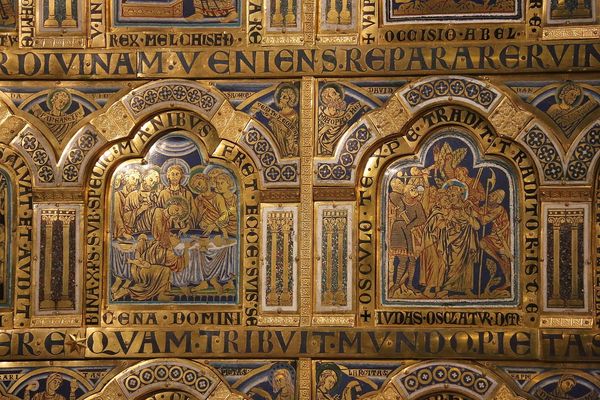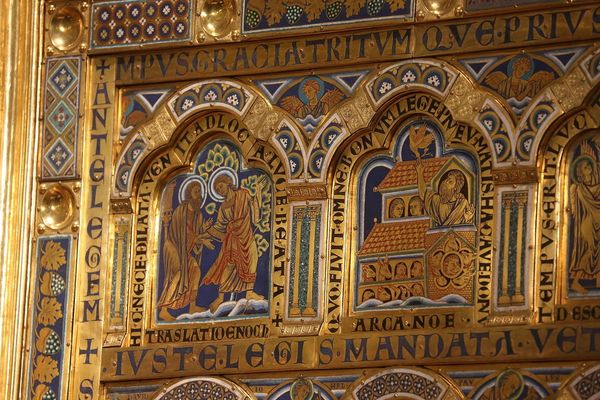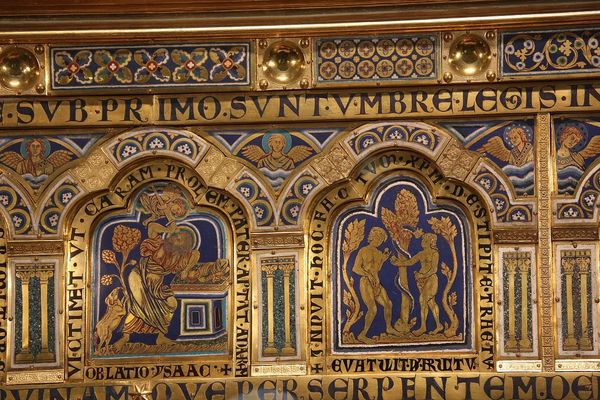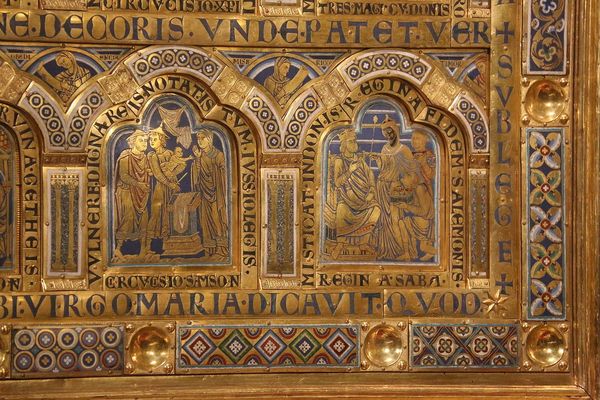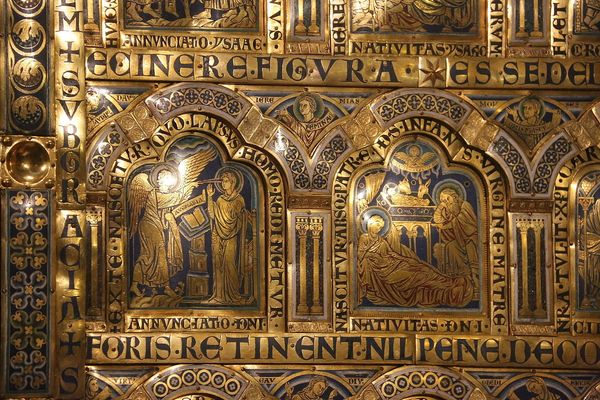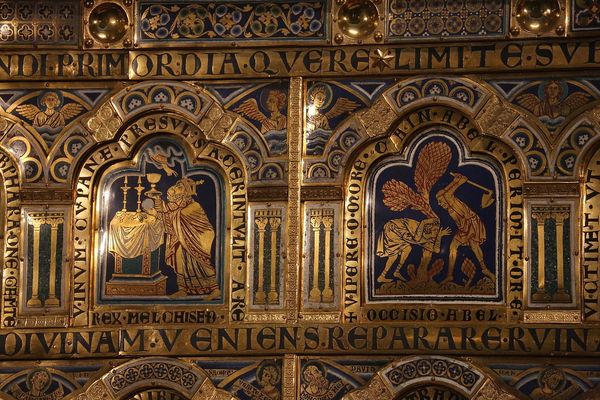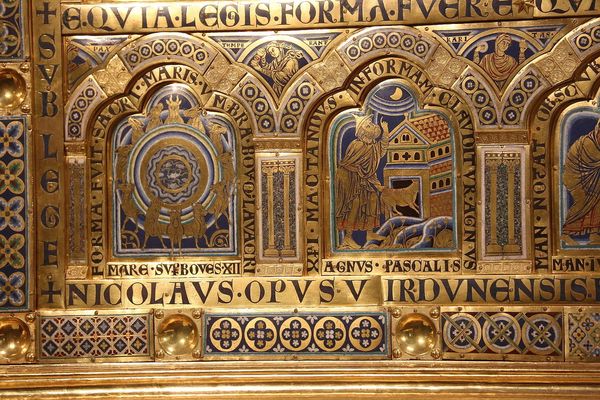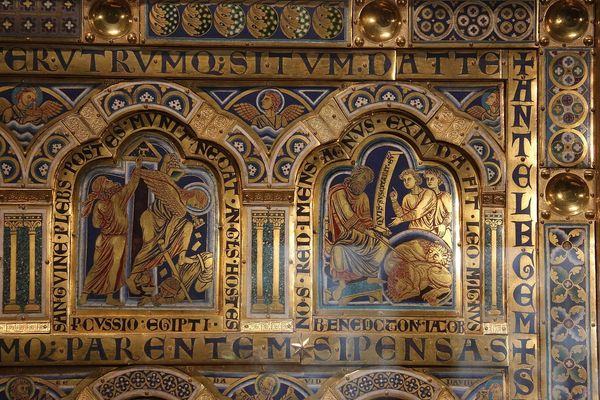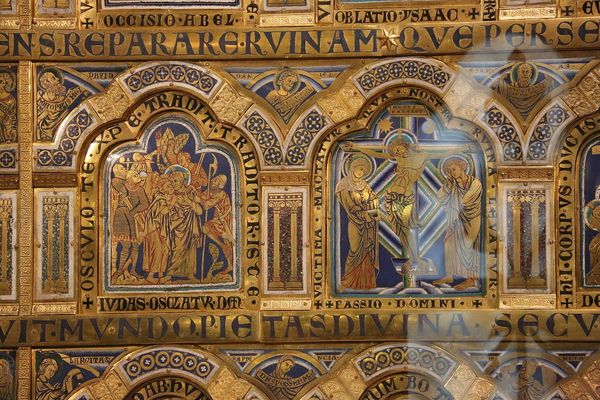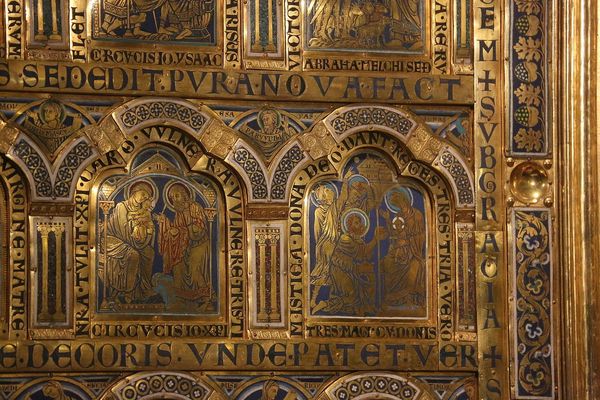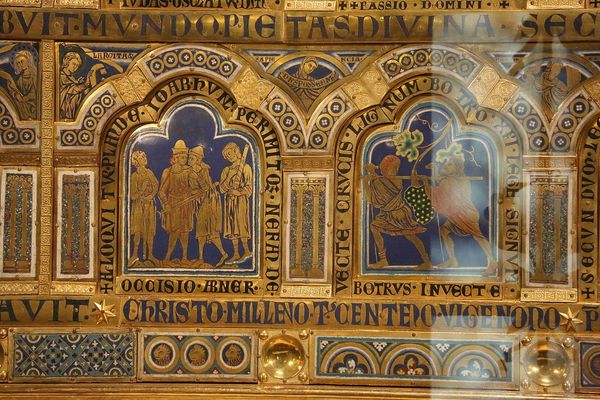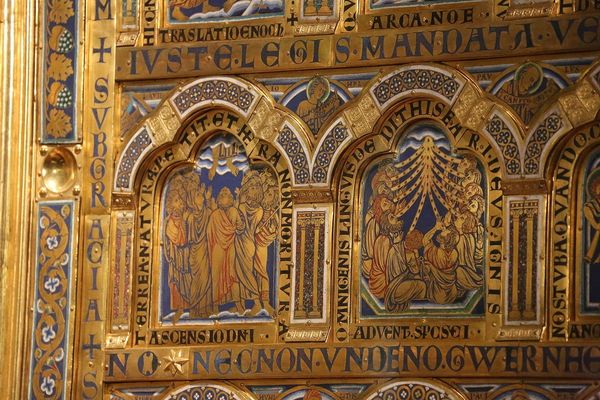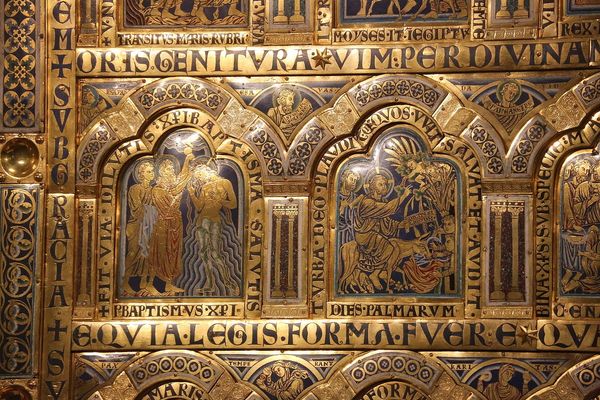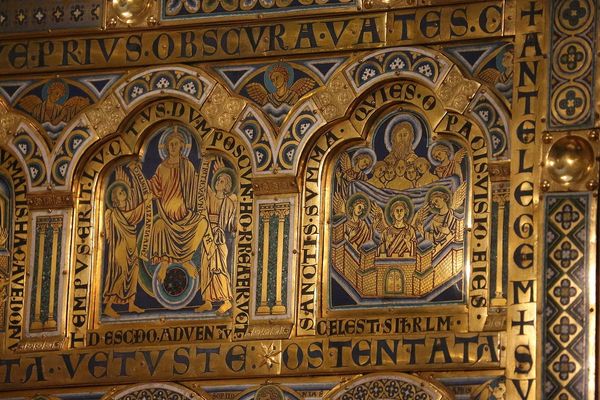
carving, tempera, relief, glass, sculpture, gilding, architecture
#
byzantine-art
#
medieval
#
carving
#
tempera
#
sculpture
#
relief
#
holy-places
#
figuration
#
historic architecture
#
traditional architecture
#
glass
#
sculpture
#
gilding
#
history-painting
#
architecture
Copyright: Public domain
This is a section of the Klosterneuburg Altar, made around 1181 in Austria by Nicholas of Verdun using gilded copper and enamel. Verdun was a leading goldsmith, celebrated for his sophisticated enamel work. The altar was originally conceived as an ambo, a raised platform for reading the Gospel, but was later repurposed. The panels depict biblical scenes, including the Deposition and Entombment of Christ. The inscriptions show his sophisticated understanding of theology. The opulent materials—gold and vibrant enamels—reflect the wealth and power of the church. The choice of scenes, focusing on the Passion of Christ, was meant to inspire piety and reinforce the Church's teachings. Verdun’s work is an important example of Romanesque art, combining technical skill with theological sophistication. To understand it better, we can research the art of the enamel, as well as the history of theology in the Romanesque period. What can this artwork tell us about the ways the Church shaped both art and belief in the 12th century?
Comments
No comments
Be the first to comment and join the conversation on the ultimate creative platform.
